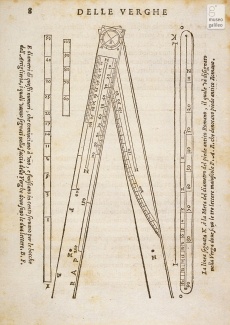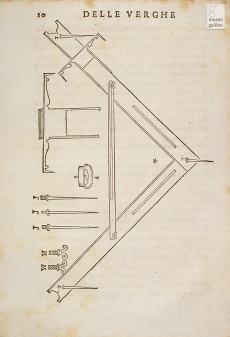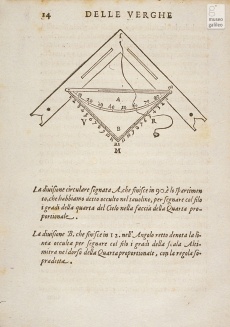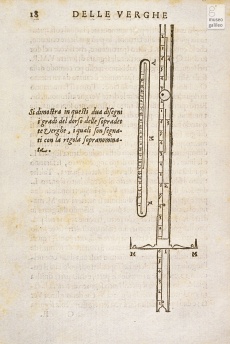Astronomical Staffs
From Inventions
| Line 7: | Line 7: | ||
|data= 1582 | |data= 1582 | ||
| - | |descrizione= Instrument used for astronomical, architectural and topographical measurements, invented and described by the Medicean engineer Antonio Lupicini. It is composed of two rods approximately 70 cm long and 3 cm wide, engraved with various measurement scales. The rods could be kept open to form a square and held in this position by a third transverse rod called the "proportional fourth", allowing it to be used as ''archipendolo'' ([[Plumb Level | Plumb level]]), [[gunner's quadrant]] or [[geometrical square]]. With the proportional fourth fixed at one end only, the verges serve as folding square and, when fitted with sights and a [[compass]], could be used for surveying. They could be opened to form a single [[ruler]], operating in this case, equipped with a special sight, as a [[Cross-Staff | | + | |descrizione= Instrument used for astronomical, architectural and topographical measurements, invented and described by the Medicean engineer Antonio Lupicini. It is composed of two rods approximately 70 cm long and 3 cm wide, engraved with various measurement scales. The rods could be kept open to form a square and held in this position by a third transverse rod called the "proportional fourth", allowing it to be used as ''archipendolo'' ([[Plumb Level |Plumb level]]), [[gunner's quadrant]] or [[geometrical square]]. With the proportional fourth fixed at one end only, the verges serve as folding square and, when fitted with sights and a [[compass]], could be used for surveying. They could be opened to form a single [[ruler]], operating in this case, equipped with a special sight, as a [[Cross-Staff |cross-staff]] (Jacob's staff). |
|componenti= | |componenti= | ||
Revision as of 11:17, 27 July 2010
Name coined by the inventor.
Contents |
Inventor
Antonio Lupicini
Historic Period
1582
Description
Instrument used for astronomical, architectural and topographical measurements, invented and described by the Medicean engineer Antonio Lupicini. It is composed of two rods approximately 70 cm long and 3 cm wide, engraved with various measurement scales. The rods could be kept open to form a square and held in this position by a third transverse rod called the "proportional fourth", allowing it to be used as archipendolo (Plumb level), gunner's quadrant or geometrical square. With the proportional fourth fixed at one end only, the verges serve as folding square and, when fitted with sights and a compass, could be used for surveying. They could be opened to form a single ruler, operating in this case, equipped with a special sight, as a cross-staff (Jacob's staff).
Bibliographical Resources
Lupicini, Antonio, Discorso sopra la fabrica, e uso delle nuove verghe astronomiche, Firenze, Appresso Giorgio Marescotti, 1582.
Capra, Baldassarre, La nuova architettura militare, Cremona 1717, Tomo I, lib. IV, cap. VIII, p. 200: “La presente Verga serve à pigliar le lontananze, le altezze, e larghezze, et ancota a squadrare i Campi, per fare le loro misure…”.
Images
Author of the entry: Filippo Camerota




